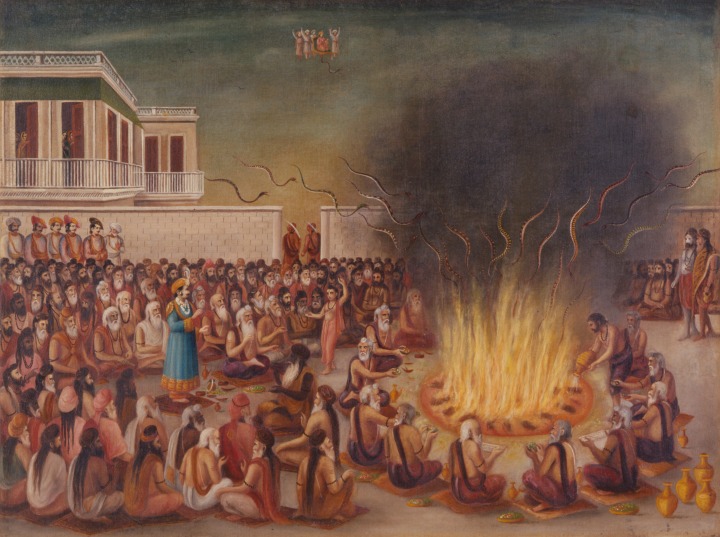Early Western-style Paintings in India
Deities in Real Flesh
Raja Ravi Varma (1848–1906) is a well-known painter in the history of modern Indian painting. He gained popularity through his paintings that depicted portraits and mythological stories in the style of Western academism; as a painter whose works are now considered national treasures, restrictions apply when exporting his works abroad. Western academism was taught in various art schools established throughout India in the 1860s. Mahadev Viswanath Dhurandhar (1867–1944) was an artist who studied at Sir J. J. School of Art in Bombay (present-day Mumbai), one of the schools established in the 1860s. He was highly acclaimed and served as the first Indian principal of the school. Although the academic style paintings of this time were later criticized as destroying Indian traditions, it is interesting to compare the various processes by which Western painting styles were accepted in Asia, especially since artists struggled to apply Western techniques to depict traditional themes (such as in the case of Harada Naojiro [1863–1899] and other artists from the Meiji Fine Arts Society). The history of the Western style painting in India is also interesting because it provided an avenue for cheap mass-produced posters of Hindu deities, which have become popular souvenirs among tourists today.

Motilal Pal Sarpayajna (The Serpent's Sacrifice) 1918―20 oil on canvas

Mahadev Viswanath Dhurandhar The Goddess Kali above Triveni Sangam date unknown oil on canvas
